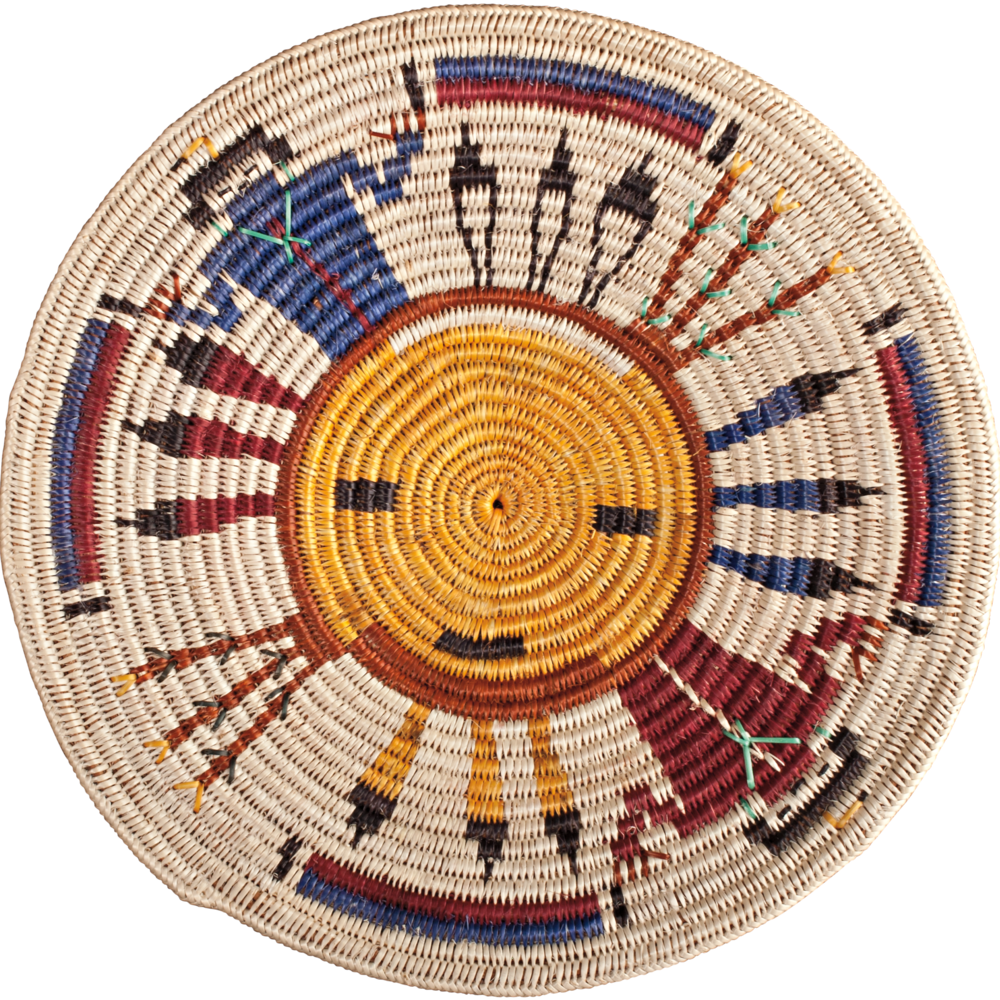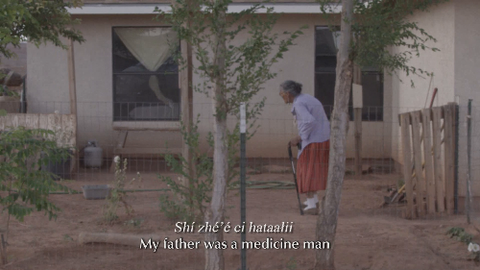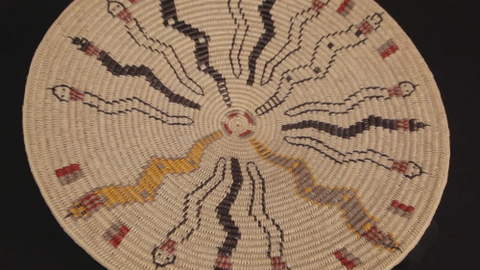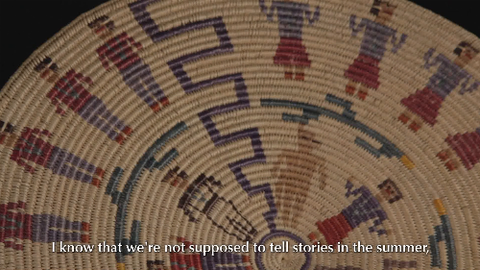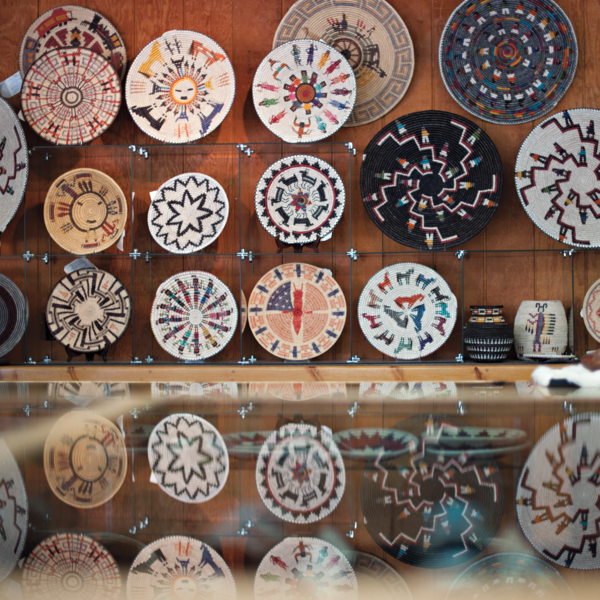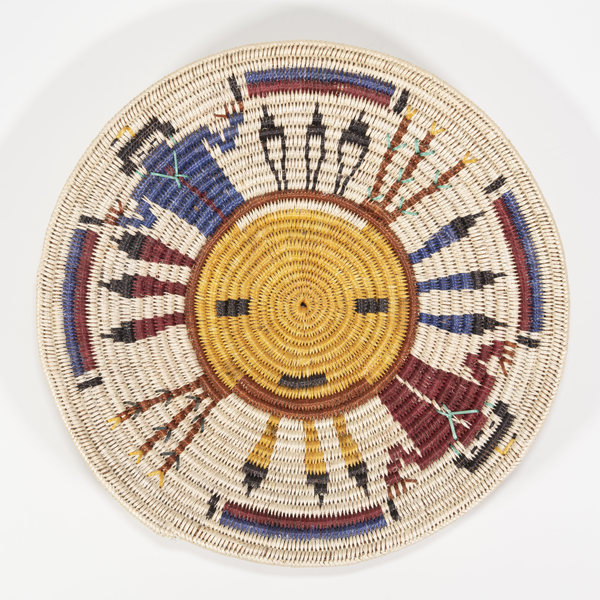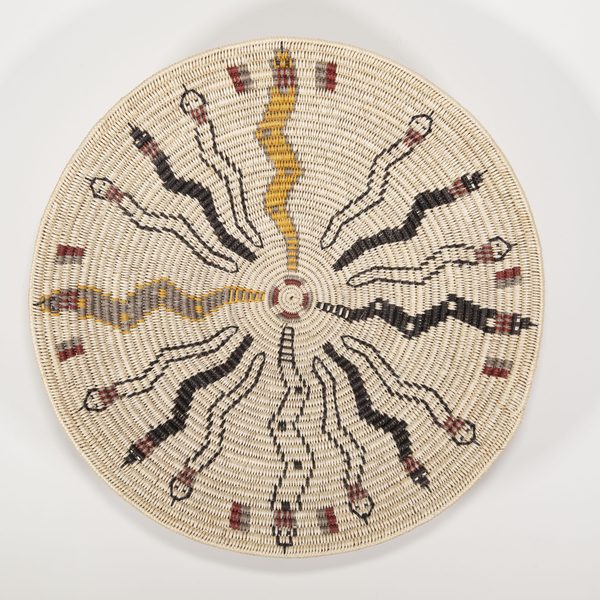Taking Risks
In Diné (Navajo) spirituality, the profound is also ephemeral. Sacred images are traditionally represented in sand, the image dissolving soon after it is created. In the early 1900s, Hosteen Klah—a renowned Diné medicine man and expert rug weaver—began to incorporate sacred imagery into his work. Initially controversial, the designs Klah pioneered are now accepted as “classic.” Contemporary Diné basket weavers faced similar scrutiny in their community when they began to weave sacred stories and images into baskets, which are themselves powerful objects. Some critics see the use of sacred imagery in baskets as a potential cause of spiritual imbalance. Weavers must find their own level of comfort in deciding which images they portray on their baskets. To maintain hózhǫ́ (balance and harmony), many weavers regularly participate in ceremonies. Some choose not to weave sacred images and direct their creative energies into exploring other designs. The weavers continually negotiate conflicting viewpoints concerning their uniquely Diné art.
